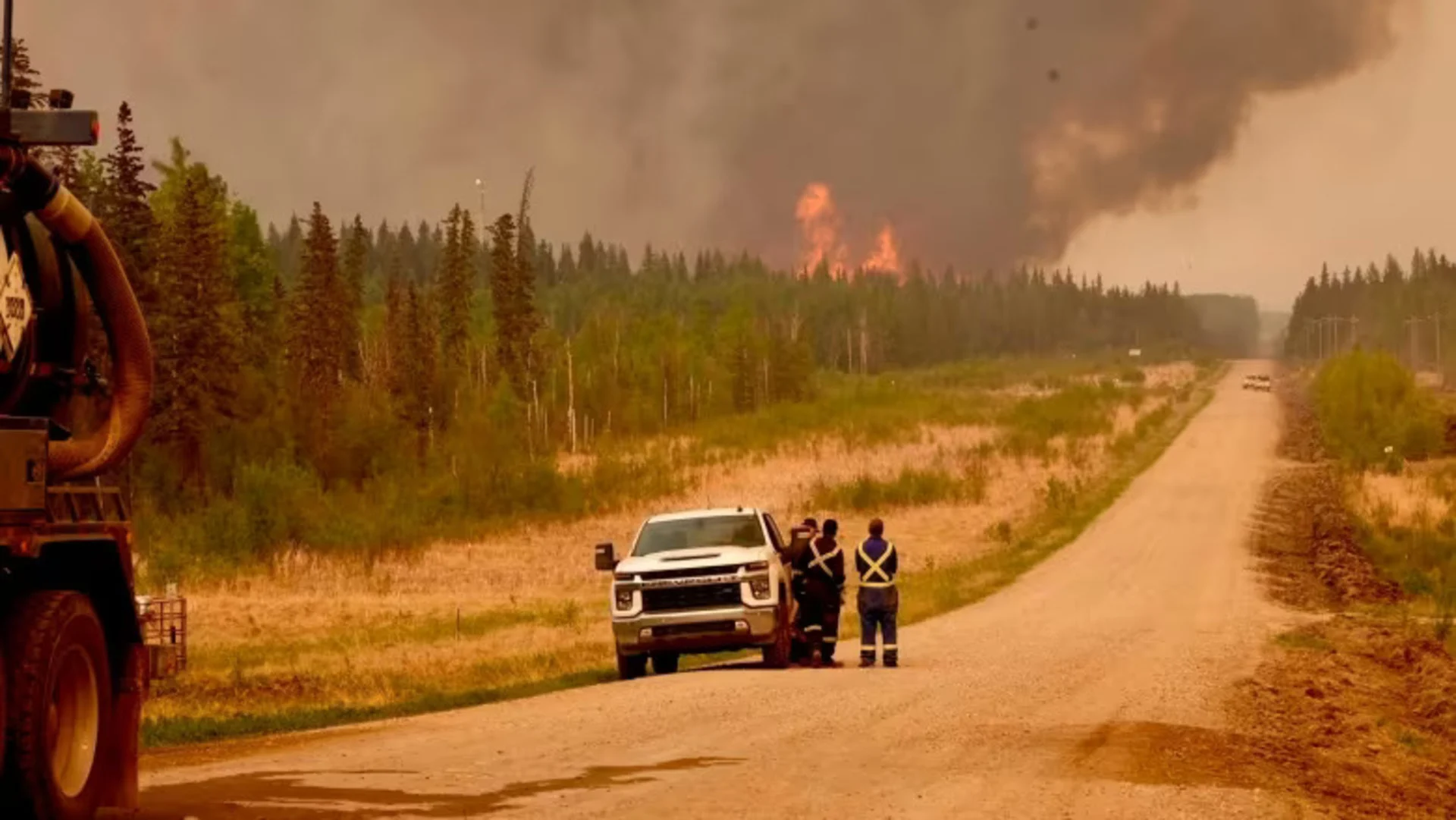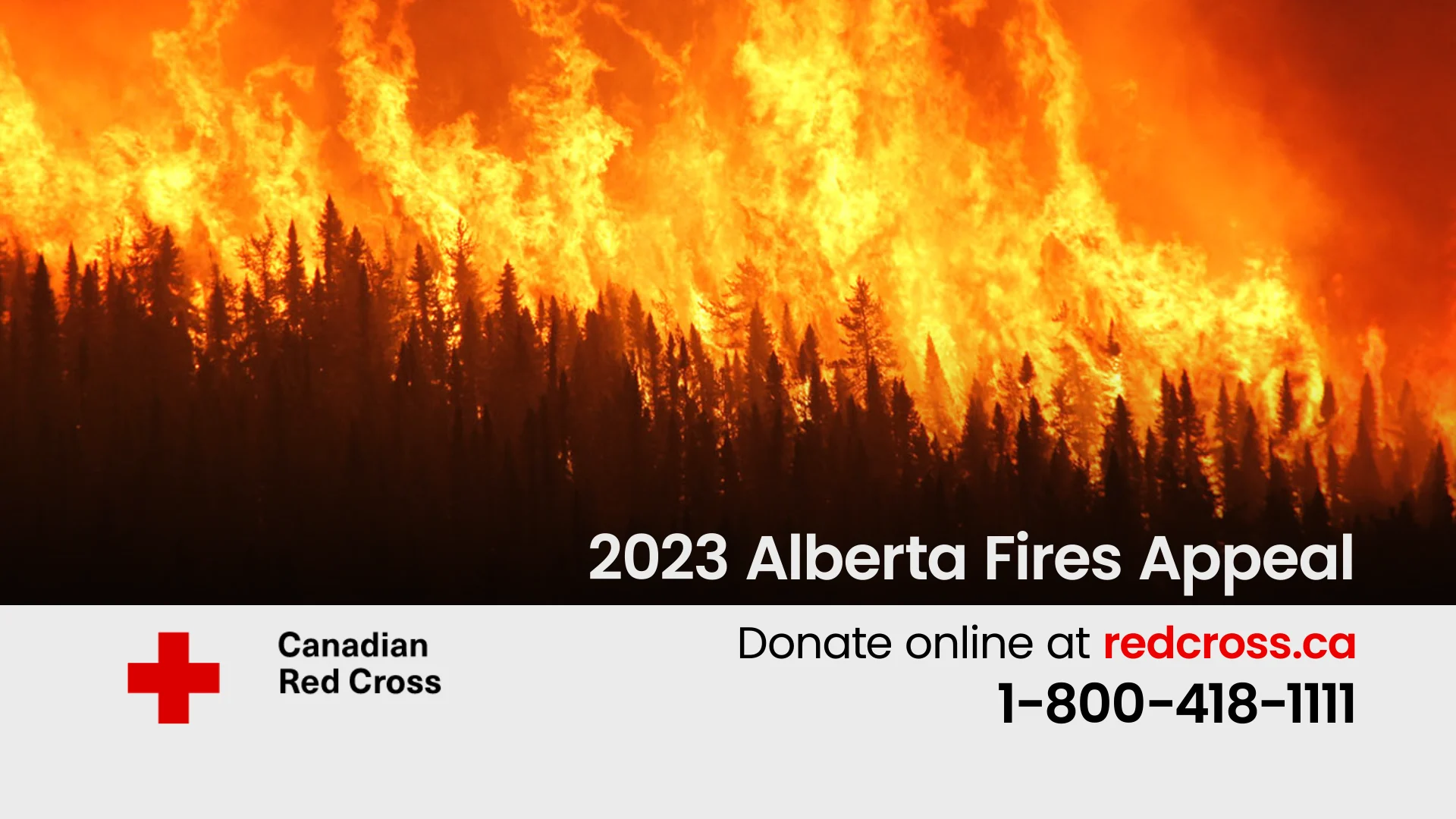
Alberta's fight against wildfires could drag on all summer, official says
Alberta's unprecedented wildfire crisis threatens to drag on through the summer months.
As of Wednesday afternoon, 91 wildfires are burning inside Alberta's forest protection areas, and 27 are classified as out of control, Alberta Wildfire information unit manager Christie Tucker said.
Firefighters are bracing for a long, gruelling season, and Tucker said Alberta has enlisted the help of nearly 1,000 out-of-province firefighters from across Canada and the U.S. so far.
"I can tell you in my experience, this is the most that I've seen coming in," she said.
Tucker said further requests for help will be sent out to ensure firefighters remain ready to jump in when needed and to rotate teams.

READ MORE: Alberta air quality amongst worst in the world due to wildfire smoke
But Alberta Wildfire information officer Josee St-Onge said Wednesday that the number of fires means it will be "a long battle" to stop them.
"Given the amount of fire we're currently seeing on the landscape, it will be months before all these fires are brought under control, unless we get a significant shift in the weather that brings a lot of moisture," she said.
St-Onge said as fires pick up in other regions, some outside teams brought into Alberta will likely need to return home.
As the crisis drags on, more help will be needed. The emergency will exhaust current resources and the province will have to bring in more crews from other jurisdictions.
"It's no doubt that it's going to be a challenging summer and that we will have to look at other sources for help," St-Onge said.
"We're hoping for some help from from the weather certainly, but it it could be a situation that we see for the rest of the summer."
Tucker said at a Wednesday news conference recent smoky conditions have made it difficult to fly over wildfires to determine their size. While there has been a short reprieve with less wind and slightly cooler temperatures, hot and dry conditions are expected to return this long weekend.
Some 2,500 firefighters are currently fighting the fires — 1,600 from Alberta Wildfire, and 900 others from the Canadian Armed Forces, other provinces and the United States.
Another 61 firefighters arrived Tuesday from Ontario, with 21 expected to arrive from New Brunswick on Wednesday.
WATCH NOW: It's wildfire season, pack your 'grab-and-go' box with these items
Lifting evacuation orders
As of Wednesday afternoon, more than 11,990 people remained evacuated from their homes, but some displaced residents have been allowed to return.
Officials with Drayton Valley and Brazeau County, southwest of Edmonton, welcomed residents back during a news conference Wednesday.
Fire Services Chief Tom Thomson thanked the community for a successful re-entry.
"I know it has been tough times for the last little while and we are so happy to see faces back and people able to be back into their homes."
He said five homes across the county were destroyed by the flames.
Multiple firefighters have also been injured while trying to save the community, according to incident commander Byron Fraser. The firefighters are expected to make a full recovery.
One firefighter was seriously injured by a falling tree in East Prairie Métis Settlement, which Fraser pointed to as one of many risks in the wildfire response.
SEE ALSO: Photos: Thick wildfire smoke engulfs Alberta, alarming air quality warnings
"That goes to show professionals that are getting injured out there. Stay out of the forest, stay safe," he said.
When asked about the gap between being able to re-open communities and lift evacuation orders, Fraser said safety was paramount.
"We still have crews working tirelessly and in dangerous spots and until we felt completely comfortable that the fire was not going to leave its containment area, it was still too high of a risk."
A key factor in making the decision to lift evacuation orders was changing weather and shifting winds.
Thomson said while the threat from a fire in the area has subsided, dangers in the community remain.
He said there are concerns about falling trees and ash pits in areas ravaged by fire as crews continue to battle active flames.
Challenging conditions
Hot, dry and windy conditions are expected to continue throughout Western Canada, potentially creating more intense and unpredictable fires through the Victoria Day weekend.
Firefighters in Alberta have battled heat and tinder-dry conditions. Shifting winds this week have accelerated fire growth, driving flames closer to some communities.
Peat found in muskeg is also challenging firefighters, acting as fuel that makes some fires difficult to extinguish and could keep some of them smouldering through winter.
Marieke deRoos, a spokesperson for the Canadian Interagency Forest Fire Centre, which helps provinces and territories share firefighting resources, said the demand on fire crews is escalating across the country.
With resources stretched increasingly thin, other countries not in the midst of their fire seasons are being asked to dispatch aid to Alberta, she said.
Visit The Weather Network's wildfire hub to keep up with the latest on the active start to wildfire season across Western Canada.
"We have turned to our partners down south in the U.S. who have already deployed resources to Alberta, and we're currently investigating other options from our other partners of New Zealand, Australia, Mexico and South Africa."
The fire danger is extreme in northern Alberta with temperatures expected to increase again toward the end of this week.
Smoke has spread south across the province in recent days, clouding visibility, aggravating health concerns and acting as a constant reminder of the crisis unfolding in communities. Special air quality statements are in place for much of Alberta.
A detailed assessment of the losses has not been completed but reports of burned homes, acreages and business continue to pour in from across central and northern Alberta.
As the threat subsides in some communities, evacuees are slowly returning home. On Tuesday, evacuation orders were partially lifted allowing for a staggered re-entry in Brazeau County, including Drayton Valley, which is home to around 7,000 residents.
READ MORE: Wildfire smoke blankets province as brisk winds accelerate Alberta's fire risk
Maj. Sean Fletcher, the officer commanding the military domestic response company in Drayton Valley, said about 125 reservists are on the ground in the area.
He said troops are providing relief to provincial crews, acting as backfill when firefighters take leave of the front lines or are dispatched to more urgent fires burning elsewhere.
Soldiers are working long hours, he said. Depending on how long the deployment lasts, fresh troops will be rotated in to avoid burnout, he said.
"We know this is a marathon, not a race," Fletcher said.
In northwest Alberta, the communities of Rainbow Lake and Chateh remain under threat and hundreds of residents of the neighbouring communities have fled.
David Morin, a firefighter who has been working in the area, echoed the call for more aid.
In terms of resources, Alberta will need "the whole kitchen sink" to tame the disaster, he said.
"We're going to need more people, we're going to need more airplanes. We're going to need more everything, just more and more and more, until we can get the situation under control.
Morin expects it will be a long, difficult wildfire season.
"I've never seen it this dry this early and the winds have been incredible," he said.
"Because it's so dry and it's so early, this is going to be a long summer for us."
RELATED: The skies are dark and filled with smoke as this plane takes off from Calgary
Thumbnail courtesy of Martin Trainor for CBC.
This article was originally published for CBC News. Written by Wallis Snowdon with files from Katie Nicholson.










